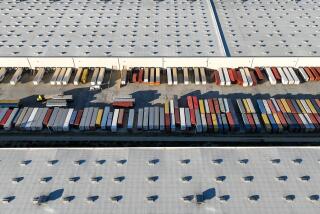Pressure Is Building on Phoenix Warehouse
PHOENIX â Edward Yue remembers coming downtown with his grandfather to the First Chinese Baptist Church, browsing through herb shops and lunching at Cathay Gardens in the bustling Chinatown that existed for decades here.
Now the neighborhood is gone and two sports arenas sit on most of the land that contained Phoenixâs Chinatown. The only remnant is a modest, single-story brick warehouse that is at the center of a debate about how to preserve the shards of this boomtownâs past.
The owners of the Phoenix Suns basketball team, which plays in the arena that flanks the 76-year-old Sun Mercantile building, want to build a 39-story luxury hotel and condominium tower directly north of the warehouse. The proposal also calls for tearing the roof off the Sun Mercantile building and placing an 11-story tower on top of it, an arrangement they say would preserve the warehouseâs structural integrity.
The project has powerful supporters, including the mayor and the Downtown Phoenix Partnership, a business group that has helped to spearhead the slow revitalization of the cityâs long-neglected downtown. âIt allows that building to live up to its full potential and bring additional people to the downtown, which is what downtowns are all about,â said Brian Kearney, the partnershipâs president.
Yue and other opponents say they, too, are for progress and a vibrant downtown but want to take special care to save traces of the past. âYou canât bulldoze things,â said former state Rep. Barry Wong, another opponent. âOtherwise, how do you distinguish Phoenix from any other metropolitan city?â
Added Yue, a 66-year-old Phoenix native and president of the local Chinese Chamber of Commerce: âI hate to see Phoenix lose its identity and have all these modern skyscraper things.â
The cityâs historic preservation officer has recommended denying approval to the tower atop the Sun Mercantile building, whose function has been listed as âlease space.â The officer also urged ensuring that the hotel/condominium project would be set far enough back to preserve the buildingâs stability.
Phoenixâs historic preservation commission unanimously upheld those recommendations this month, but the project will still go ahead if it wins City Council support in December.
The debate about what to do with the Sun Mercantile building comes as Phoenix, long one of the most sprawling of American cities, begins to focus on infill and building a denser downtown.
The city has lured a new campus of Arizona State University downtown and is constructing a light-rail line to connect the center with the vast suburbs. The few remaining 1920s bank buildings and hotels are being converted into lofts and condominiums, and 1,500 more residential units are being built.
When downtown Phoenix was transformed into a maze of glass-and-steel high-rises in the 1980s, older buildings were replaced with little attention to historic preservation, Kearney said. Now many developers are trying to refurbish and market older properties, but tensions between progress and preservation persist -- and are exacerbated as the few vacant pieces of land are snatched up and new growth occurs on occupied land.
This year, the city approved the demolition of an old boxing arena on the edge of downtown, which will be replaced with an office building. âAs more activity has begun to occur downtown, we are running into a situation where we deal with historic structures with greater frequency,â Kearney said.
The Sun Merc building was constructed in 1929 by Shing Tang, a Chinese immigrant who settled in Phoenix and built a grocery empire. In its time, the building was the largest grocery warehouse in the state, a distribution center that stored goods destined for towns across Arizona. Though the business closed years ago, the Tang family remains well-known in Phoenix. Thomas Tang, Shingâs son, was a judge on the U.S. 9th Circuit Court of Appeals.
The Sun Merc building was vacant for years. The Sunsâ owners bought it when they constructed their stadium due east, and converted the interior into a fitness club. But that business closed years ago, and the warehouse sits quietly in the shadow of America West Arena, with only a small plaque on the north side attesting to its historic significance.
âPutting 11 stories up changes the feel of the building,â said Wong, the former state representative, as he walked around the structure recently. âIf you put that glass building straight up hereâ -- he gestured above the squat warehouse -- âthatâs just intense. Itâll just overwhelm this building.â
Wong and others want to house an Asian American museum in the structure.
Representatives of Southwest Value Partners, the company proposing the development, did not return several calls for comment, but they have said that they were concerned about preserving the buildingâs integrity. Kearney, of the Downtown Phoenix Partnership, said he also believed the proposal to put the tower on top of the warehouse would not damage the historic nature of the building.
âThereâs certainly a sensitivity, as weâre investing millions of dollars downtown, to hold onto what we have left of our past,â Kearney said.
More to Read
Sign up for Essential California
The most important California stories and recommendations in your inbox every morning.
You may occasionally receive promotional content from the Los Angeles Times.






